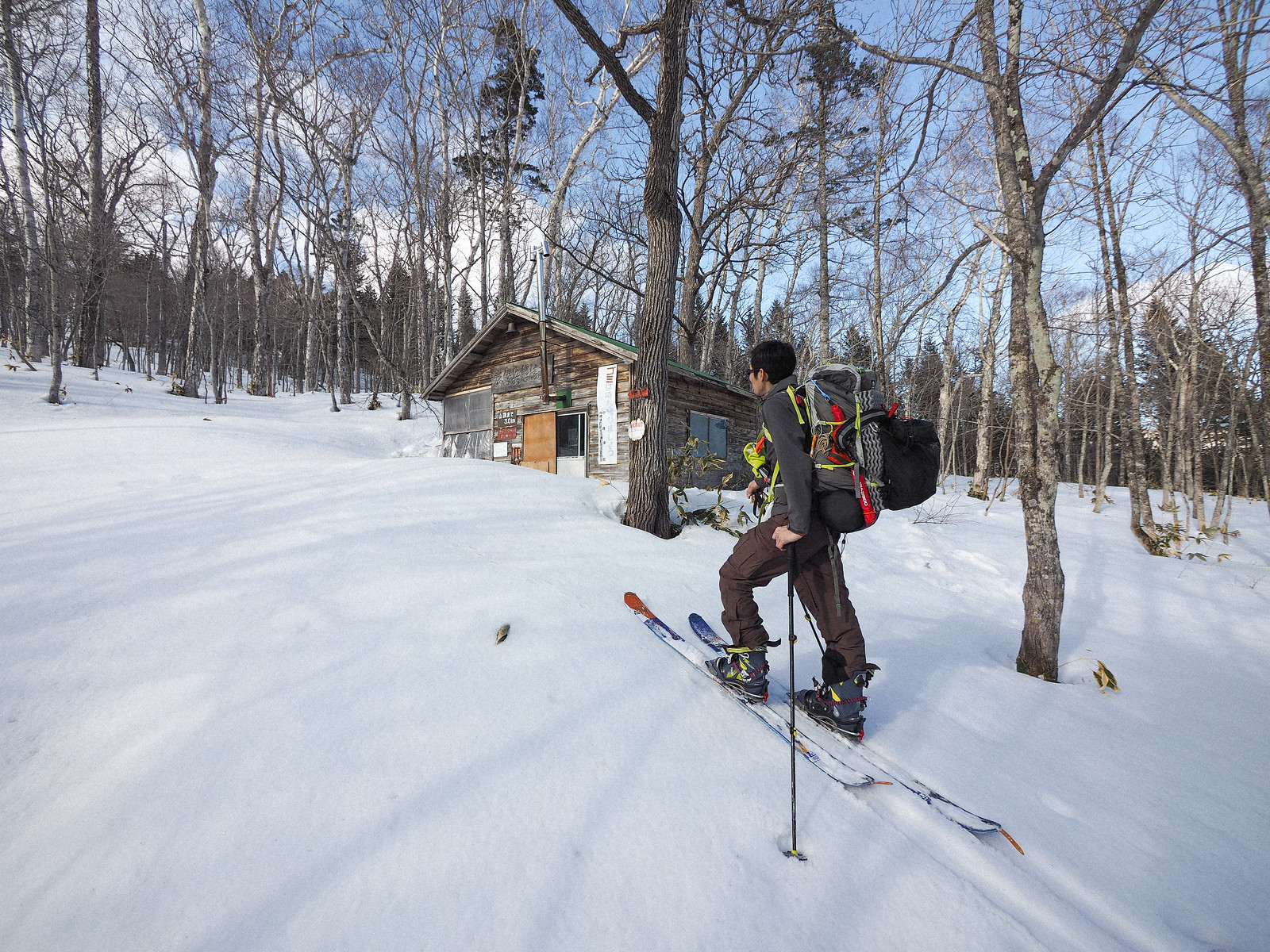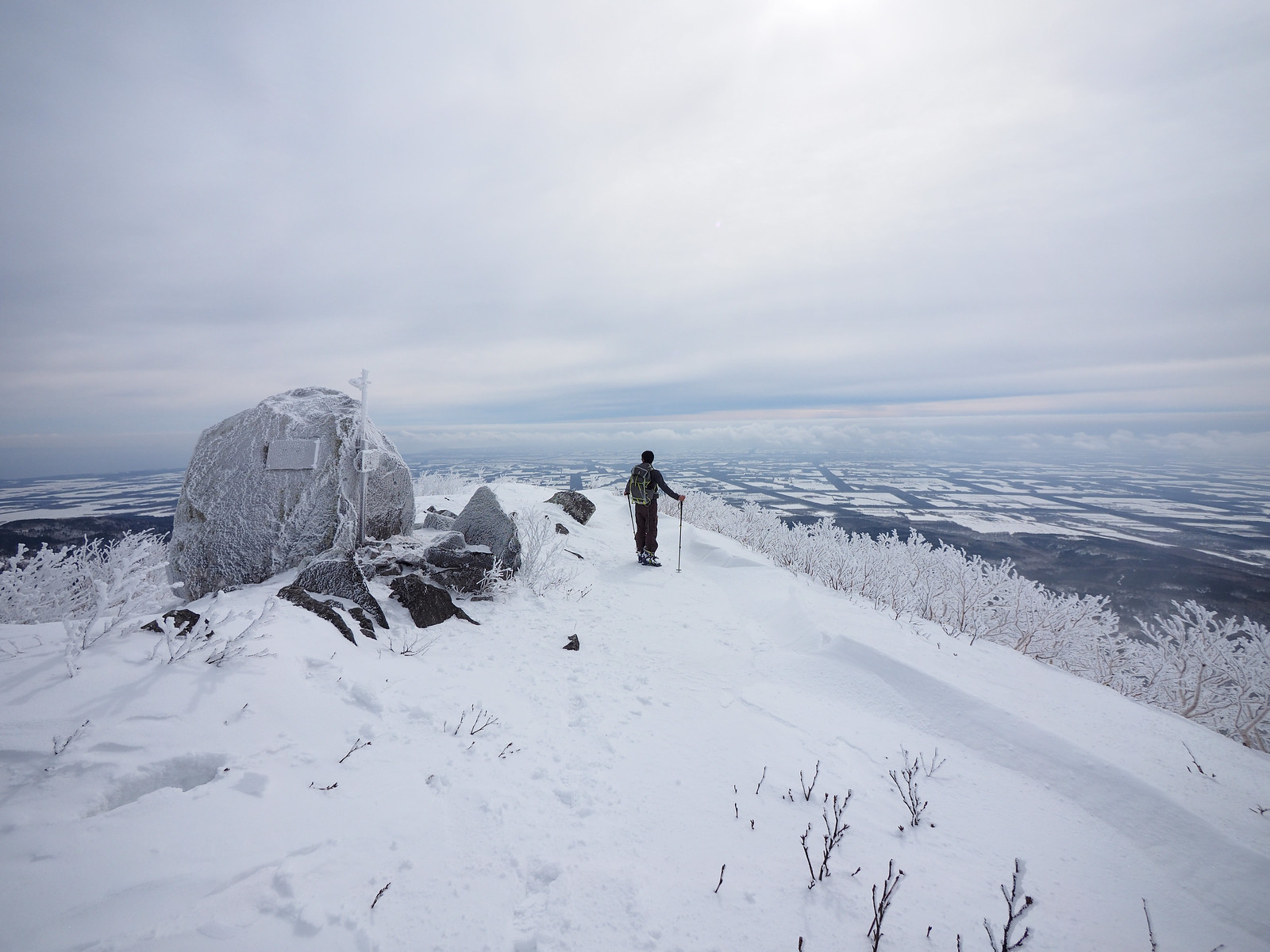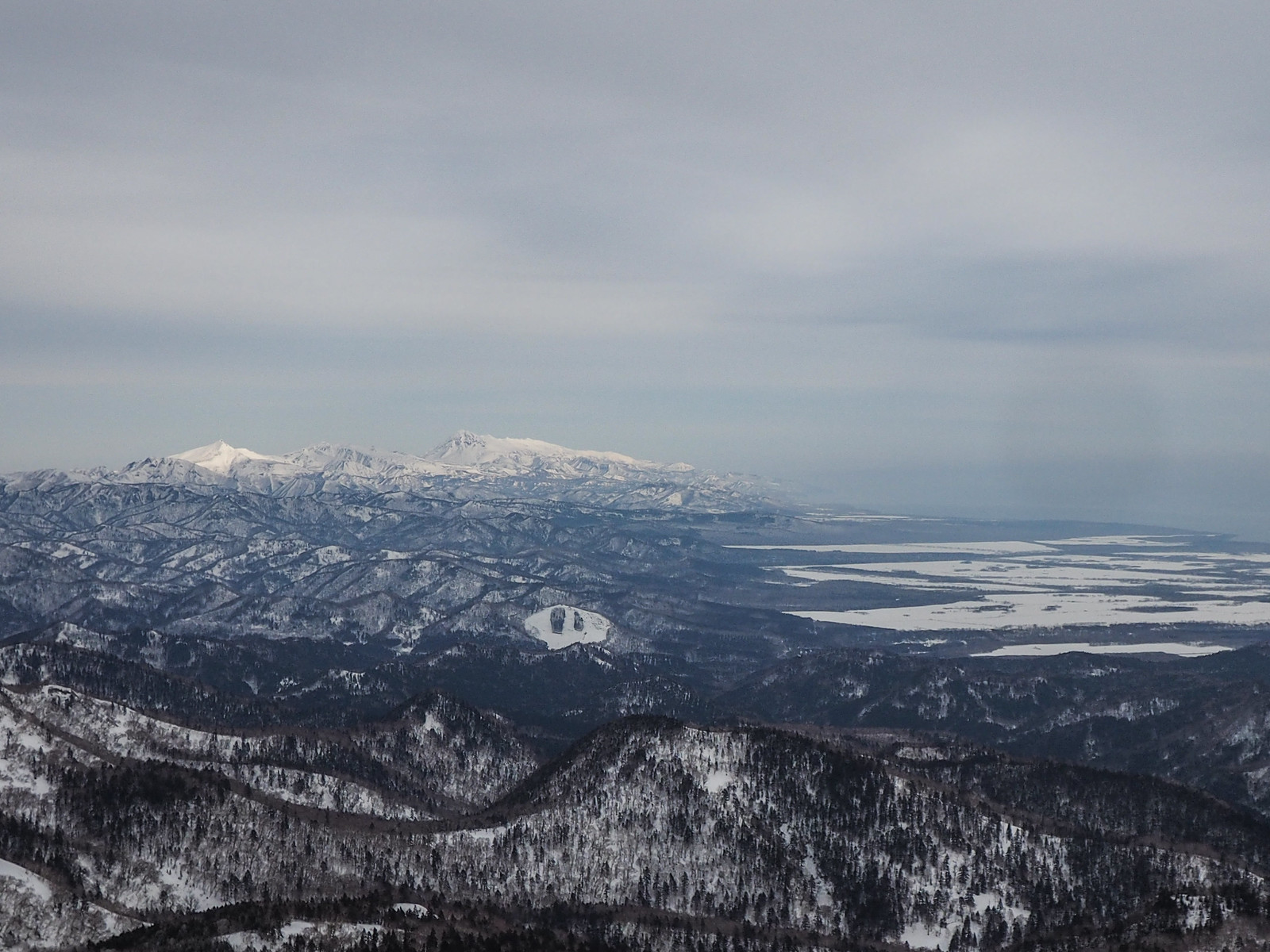There’s a Japanese site that lists all of the mountain huts in Hokkaido (here). It only provides very basic information, and I was scouring it on a Monday night, doing Google searches for each and every one, to see if any of them were practical and possible to use in winter on a back country ski tour.I had made a shortlist of huts I’d not been to before (huts I have been to before are here):
- Yufure Hut (ユーフレ小屋) on the Hontani Route up Mt. Ashibetsu in Furano (approximate route here)
- Mt. Teshio Hut (天塩ヒュッテ) on the northwestern side of Mt. Teshio (tentative route here)
- Mt. Musa Sokuseiso Hut (武佐岳憩清荘) in far-eastern Hokkaido
- Mt. Nishibetsu Hut (西別小屋) to the south of Lake Mashu in eastern Hokkaido
- Mt. Muroran Shiratori Hut (白鳥ヒュッテ) near Muroran City on the south coast of Hokkaido (tentative route here)
Yufure Hut would have been great, but a call to the Furano City council (0167-39-2312) revealed that the hut’s chimney was currently broken, scheduled to be fixed in summer. This meant that the stove was not available for use. The Mt. Teshio hut looked amazing, but the town council (TEL: 01652-8-2121) let me know that the hut is completely shut up in winter, and is not even available for emergency stays. The Mt. Muroran Shiratori hut has long been on my list, but it is a super easy route that would suite an easy weekend with Haidee.
That left the two eastern Hokkaido Huts – Mt. Musa and Mt. Nishibetsu. Calls to the respective town councils confirmed they were available for use, no booking required. If I added to those two huts a camping trip to a ski-access wild hot spring, then it would make a very nice four-day trip, worth the 6-hour drive from Sapporo to eastern Hokkaido. If only I had the time.
This was Monday night. At around noon on Tuesday, as I was eating my lunch at work, I realized that Wednesday was a public holiday. I would only have to take two days off work, and the four day trip out east would work. But who could I ask to come at such short notice?
I emailed Hiro, the master of gourmet hut meals, and he dropped everything to join in on the crazy, adventurous plan to drive 6 hours the next day to visit two huts and some hot springs. I hoped Hiro’s trust in my planning would not be for naught.
So there we found ourselves, almost at the very eastern point of Hokkaido, at around 1pm on Wednesday, after leaving Sapporo at 6:30am. We were ready to start skinning up towards a hut we didn’t know much about, apart from that there was a stove and fuel for said stove.
It was a hot spring day as we set off under clear blue skies. The route from the official trialhead is flat and follows a forestry road for about 1km before moving to the summer trail. Most of the way up to the hut is through plantation forest with some pockets of native bush. Closer to the hut the plantation gives way to well-spaced native forest.
We were there in spring, so the forestry roads were cleared. The gates to the forestry roads were also open, but we didn’t feel confident to enter and leave the car overnight – we didn’t want to find the gates locking us in the next day.
It really didn’t feel like much time at all had passed before we were at the hut. From the outside, the hut looked rustic, but perfectly acceptable. The exterior oozed charm. The chimney looked intact, so that was a very positive sign.
We had to spend a few minutes digging snow away from the entrance in order to free the plywood cover over the damaged door. The one working sliding door would only slide about 10cm before jamming, so it was clear the plywood would be our door for our stay.
After gaining entrance to the hut, however, my heart sank. The interior was not much better than what you’d expect from an abandoned building. Most shocking was the wooden floor. Twisted and bent, there was very little flat area. Temporary attempts at making the place more air-tight using thin foam sheet had been thwarted by large holes gnawed by mice. All surfaces were dusty and gritty. Mouse poo everywhere. I picked up a large plank of wood resting on the floor, and this revealed a swarming mess of winged ants. I gently laid the plank back down.
Overall, the place was a mess.
So we got to work. I was glad to have my buff to filter the dust as I breathed – sweeping up created clouds of chocking dust.
It was just before 9pm that we headed to our respective flat-ish corners of the hut for a good night’s sleep.
The next morning, I toasted on top of the stove the bagels I had brought. Hiro of course one-upped me with by pulling out the bread dough he’d made up the night before, and baked it on the stovetop.
After signing the guestbook, we left out overnight gear in the hut and headed out to try to summit Mt. Musa. We’d had a clear view of the summit the previous day, but this morning it was shrouded in cloud. The snow was hard and icy – typical spring conditions.
The forest was beautiful though. Approaching the narrow summit ridge, the route alternated between steep climbs and flat clearings.
After about an hour, we found ourselves on a very narrow ridge. In softer snow conditions it would have been relatively easy going, but the hard icy surface underfoot made traversing a challenging experience. The view over the plains, towards the sea, however, was huge, all along the ridge to the summit.
Before making the final climb towards the summit, the route crosses a wider saddle. About half way up the final climb to the summit, we switched to boot-packing. In softer snow conditions it would be possible to make wider zig-zags up the ridge, but for us it was quicker and more straight forward to walk up.
Mercifully, the cloud cover crept higher and higher as we climbed, such that as we crested the summit ridge, we had immense views all the way to the east across the Shiretoko Peninsula. Mt. Shari, Mt. Rausu, and all the hills between an beyond stood to attention. This was beyond what we’d been expecting, so it was an awesome surprise.
We’d expected that it wouldn’t be practical to ski from the summit, and our hunch was right. We’d left our skis about 100m down, so after walking back down to them we started the icy descent back the way we’d come.
Instead of trying to ski along the knife-edge ridge, we traversed considerably along and down the eastern side of the ridge where the trees were relatively sparse. In hindsight we should have connected back up with a flat area of the main ridge at around 640m. From there the ridge widens and would allow for some nice downhill skiing to the hut. We carried on traversing, and ended up in very thick trees.
We did finally make it to the wide ridge above the hut, and enjoyed a quick dash through the forest to the hut.
We did a final quick clean up of the hut before hurtling back down the summer trail to the car at the trailhead. With the hard snow underfoot, we were able to skate most of the way along the flatter sections.
Overall, it felt like it had been a great mountaineering-type overnight trip. Because the hut is so close to the trailhead, it meant we could drive all the way from Sapporo and still get onto the mountain and stay in the hut before nightfall. The narrow ridge to the summit was exhilarating, and the traverse back to the hut was quick and straight forward. The views were to die for. We didn’t notice any clearly amazing ski lines on the mountain however, so it’s unlikely I’d go back purely for the skiing.
From the trailhead, we started driving in the direction of the next objective – the famous and legendary Mt. Nishibetsu Hut.














































